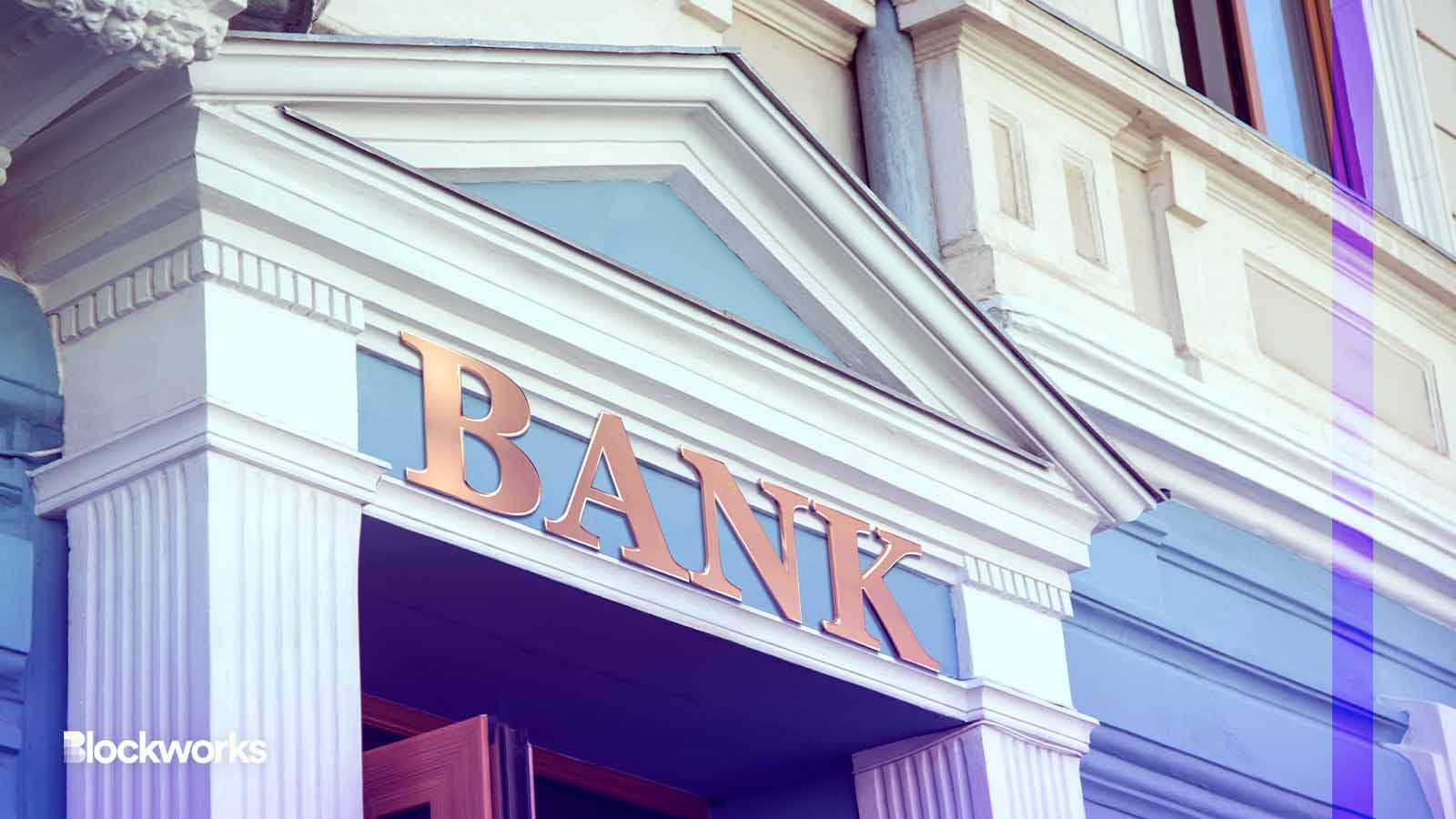Banks Can ‘10x the Blockchain Industry’ Says Chainlink Co-founder
Swift is teaming up with the world’s largest banks and financial market infrastructure providers to link up public and private blockchains

Anton_AV/Shutterstock modified by Blockworks
The Society for Worldwide Interbank Financial Telecommunication (Swift) on Tuesday announced a collaboration between major banks and Web3 infrastructure provider Chainlink to trial connecting private and public permissionless blockchains.
Swift is a global financial messaging system that underpins most international money and securities transfers. In 2022, it initiated tests to explore the interoperability of private blockchains among financial institutions for tokenized assets. Building upon this initiative, Swift is now expanding the scope of its experiments to encompass public blockchains. To facilitate this expansion, Swift will use Chainlink’s Cross-Chain Interoperability Protocol (CCIP).
“More institutions are beginning to explore how to serve customers on both permissioned and public blockchain networks like Ethereum,” Jonathan Ehrenfeld, head of securities strategy at Swift, said in a statement.
The collaboration includes major financial institutions across the globe, including BNP Paribas, BNY Mellon, Citi, Euroclear, SIX Digital Exchange (SDX) and The Depository Trust & Clearing Corporation (DTCC).
Chainlink is providing what Swift calls an “enterprise account abstraction layer.” Sergey Nazarov, one of the company’s co-founders, said that he thinks the asset tokenization trend is being embraced by banks and financial market infrastructure institutions alike, which has the potential to “10x the blockchain industry size.”
“It shows that the largest financial institutions — even in a down market — are interested in blockchain technology reinventing how the capital markets work,” Nazarov told Blockworks.
CCIP is a “universal messaging interface” for cross-blockchain communications. Its ability to interface with private blockchains, plus security features like an active risk management network, are what differentiate it from alternatives like Axelar’s General Message Passing and make it appealing to major financial players, Nazarov said.
CCIP uses the same security model as Chainlink’s oracle network, which has processed over seven trillions of dollars in value, he said.
Swift’s goal: Use existing bank systems
Swift launched its first messaging services in 1977, replacing the prevailing technology of the time, Telex — it was “like a private financial internet before the internet,” Nazarov said. There is a lot of legacy financial infrastructure that banks want to preserve while also gaining the efficiencies that they recognize are available from blockchain networks.
Tom Zschach, chief innovation officer at Swift, sees a multichain future, and connecting to hundreds of different chains is not feasible for most banks. Chainlink aims to save thousands of global banks time and money by linking chains through one integration.
“What’s missing is the ability to send [assets] from a bank chain to a public chain — banks want to do that,” Nazarov said.
“It’s not called chain link by accident,” he chuckled.
The proof of concept will demonstrate how banks can practically interoperate across these networks, both public and private.
For instance, Nazarov said, a bank can issue a security token on its own private chain, using CCIP, then move the token to the chain of a custodian such as BNY Mellon. It can update a proof-of-reserves record on CCIP, and enable a third bank to buy the tokenized security, and transfer it to its own private chain.
In this example, all the chains in question are private, but Nazarov pointed to French bank Société Générale’s use of public Ethereum as an example where public blockchains can be in the loop.
“In my eyes, blockchains, public and private, will eventually get enough features that they become the same thing,” Nazarov said, likening it to the evolution of various independent networks into what we now call simply “the internet.”
Once the technology is in place to let banks take various securities and move them around easily, they will adapt certain types for use on public chains, he said.
They are too big a market at this point to ignore.
“I think they realize the digital asset class is not going anywhere,” Nazarov said.
Get the news in your inbox. Explore Blockworks newsletters:
- The Breakdown: Decoding crypto and the markets. Daily.
- 0xResearch: Alpha in your inbox. Think like an analyst.






